The annual drama that is the House Wren begins in April and ends in October. When they arrive in spring, their boisterous, rollicking torrent of a song flows across the landscape. A male House Wren sings 600 times per hour, or 430,000 times between April and July. They are a tiny, exuberant miracle focused on one overarching goal: to make more wrens.
Early some morning in April there will go off under your window that most delightful of all alarm-clocks – the tiny, friendly house wren, just returned from a long visit south. Like some little mountain spring that, having been imprisoned by winter ice, now bubbles up in the spring sunshine, and goes rippling along over the pebbles, tumbling over itself in merry cascades, so this little wren's song bubbles, ripples, cascades in a miniature torrent of ecstasy.
Blanchan 1903
The song of the wren is comforting and reassuring. They open up their heart and vigorously pour forth beauty into the world. Each song is accompanied by a pulsating throat, quivering bill, and shaking body. An all-out effort while leaning into the light.
How
Did the rose
Ever open its heart
And give to this world
All its Beauty?
It felt the encouragement of light
Against its Being.
Otherwise,
We all remain
Too
Frightened.
― Hafez
A casual scan of the soundscape will easily pick up their song, but House Wrens are not always loud. When a pair bond is formed, the male switches to singing a whisper song. He sings with his bill closed, and his song is not audible beyond ten meters. He also switches to making high-pitched squeaks when a female is building a nest and laying eggs. These squeaks represent a continuous outpouring of emotion that reaches its pinnacle during copulation and egg-laying.
This spring a pair took up residence in a nest box on a light pole next to our driveway. After that, every visit to our garden involved an unavoidable encounter with the wrens. When you get within ten yards of the nest, the wrens transition from singing to scolding. There is a brief period where they appear to be doing both simultaneously. The clear whistled notes of their song merges with harsh raspy rattles. They are protective of their family.
The female is incubating 4-8 tiny brown-speckled eggs, and it will not be long before the marathon parenting adventure begins. When the eggs hatch, the House Wrens become even more impressive. The male keeps singing, and both parents continue to scold you as they deliver a continuous stream of insects to the new life in their nest.
The nest is quiet for the first few days, but then subtle calls start emanating from the box. The one-gram nestlings will grow to ten grams in ten days. Their begging calls increase in intensity as they grow. The last few days the nestlings are in the nest box, it literally vibrates and shakes with their energy. The tiny box is housing a lot of wren.
I pay close attention to the wrens at this time in hopes of seeing new life enter the wide world. Eight delicate, naive little bundles of energy and attitude will soon be blinking in the sun. This is a perilous time for the wrens, and the parents are constantly calling to their young to get them into safe cover. The fledglings are slow to respond. All eight of these weak, nearly flightless, and definitely clueless fledglings are randomly exploring the world. Most of them will not make it.
I watch two fledglings hop up on the garden fence. Their parents are calling from the branches of a Pin Oak nearby. I hope they will fly up to join their parents. Instead, they fly over and cling to the bricks on the side of our house. This is when things get interesting. I notice our lovely cat sitting on the top of our couch staring out the window. She is an indoor cat, but the young wrens engage her instincts.
When the two young wrens hop up on the window sill, Tomoko’s ears flatten against her head as she crouches down and becomes still. In her mind, the pane of glass and window screen do not exist. She slowly slinks across the couch like a miniature leopard, disappears from view, and then her now-menacing face slowly materializes in the corner of the window as the wrens rest one inch away. The wrens do not react. Tomoko reaches her front paw out and tries to bat one of the wrens. Still no response.
A frantic parent flies down at this point and lands next to the fledglings in an attempt to get the young wrens to fly up to the oak tree. Parents are calling, fledglings are calling, our cat is frustrated, and time seems to stand still. How long will they sit there one inch away from a cat? About thirty seconds.
The young wrens sit on the window resting on what appear to be oversized feet and legs. The rest of the bones in their body are not yet fully calcified. They are young, and soft, and appear to be looking around in wide-eyed amazement. Eventually, they respond to their parents and make a weak flight up into the oak tree. Tomoko watches them go with one paw poised to swat. Compelled by her instincts, she cannot leave the young birds alone. They were saved by the glass this time.
A few minutes later, part of the wren entourage makes its way over to the apple trees on the side of our house. I lose track of the fledglings but can track the parents by their constant calls. Three fledglings end up perched on top of our wood pile. My first thought is, “That is not a good place to hang out.” Chipmunks and squirrels frequent the woodpile, and both of them will eat young birds.
The fledglings fly up into the lower branches of a Silver Maple to join their parents, and they eventually disappear into the canopy. I feel proud of myself at this point, reflecting on how I maintain nest boxes and grow enough native plants to supply thousands of insects for the birds.
My positive feelings quickly recede into the background when I come face to face with the reality of nature. I have another close encounter with a fledgling wren. She is lying on her side on our cement patio and her head is missing. I feel a wave of shock and sadness wash over me. She looks serene with the wren energy drained away. The wind ruffles her soft brown feathers, imparting a sense of movement.
I observed most of her tender, short life. I suspect chipmunks, but squirrels and cats are also likely predators. We have at least four neighborhood cats that regularly visit our yard. This is one more indirect way that we diminish nature. The imbalances that we foster enhance the lives of cats, dogs, squirrels, and chipmunks at the expense of young birds.
I am partly to blame. The seed I put out for the birds supports an inordinate number of squirrels and chipmunks. However, it only takes one predator to kill a young bird.
I consider admiring her at close range but choose to quickly grab a shovel and bury her under our pear tree. She’s gone away into the ground where she will become part of the tree. I will see her in the brown bark, shiny leaves, and bright green pears.
She would have left us in the fall for warmer climes if she had survived. The aural landscape is diminished by this loss, and there ain’t no sweet song when she’s gone. The air goes cold when she’s away.
Ain't no sunshine when she's gone
It's not warm when she's away
Ain't no sunshine when she's gone
And she's always gone too long
Anytime she's gone away
Wonder this time where she's gone
Wonder if she's gone to stay
Ain't no sunshine when she's gone
And this house just ain't no home
Anytime she goes away…..
Hey I oughta leave young thing alone
But ain't no sunshine when she's gone, woh woh
Ain't no sunshine when she's gone
Only darkness every day
Ain't no sunshine when she's gone
And this house just ain't no home
Anytime she goes away….
Bill Withers
This article on Catios provides plans for different styles of enclosures that allow cats to enjoy being outdoors without the worry of them getting lost or hurt.





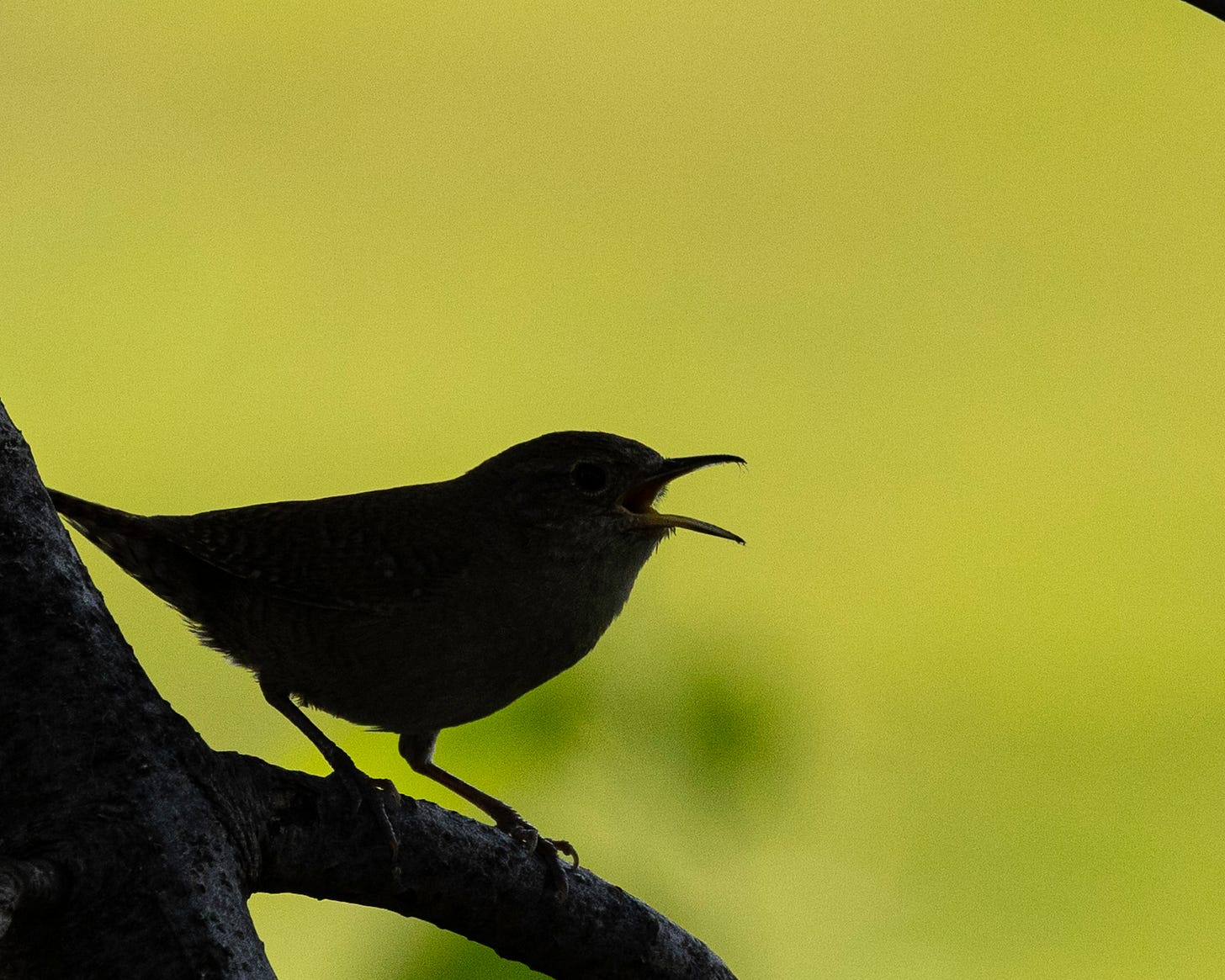
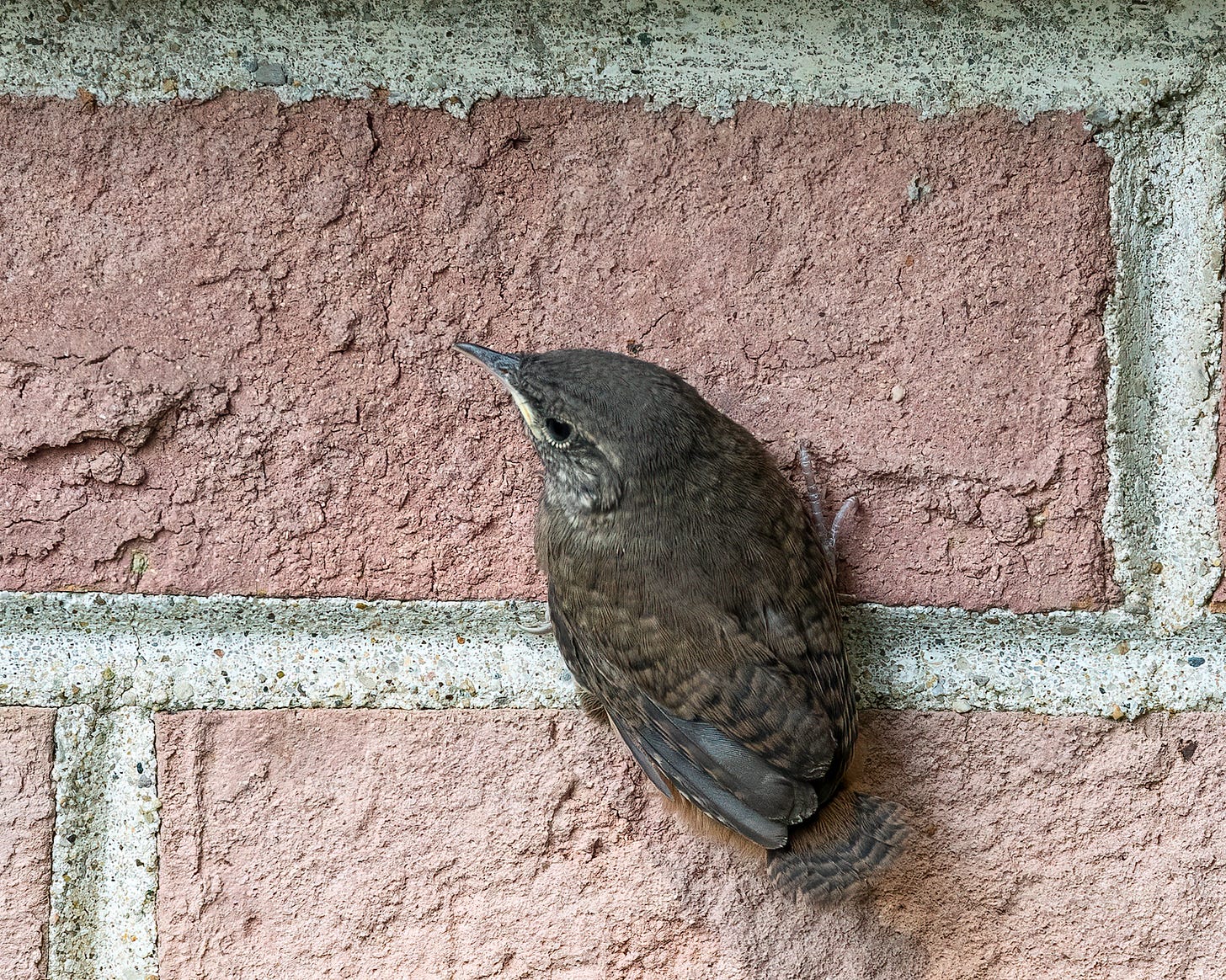
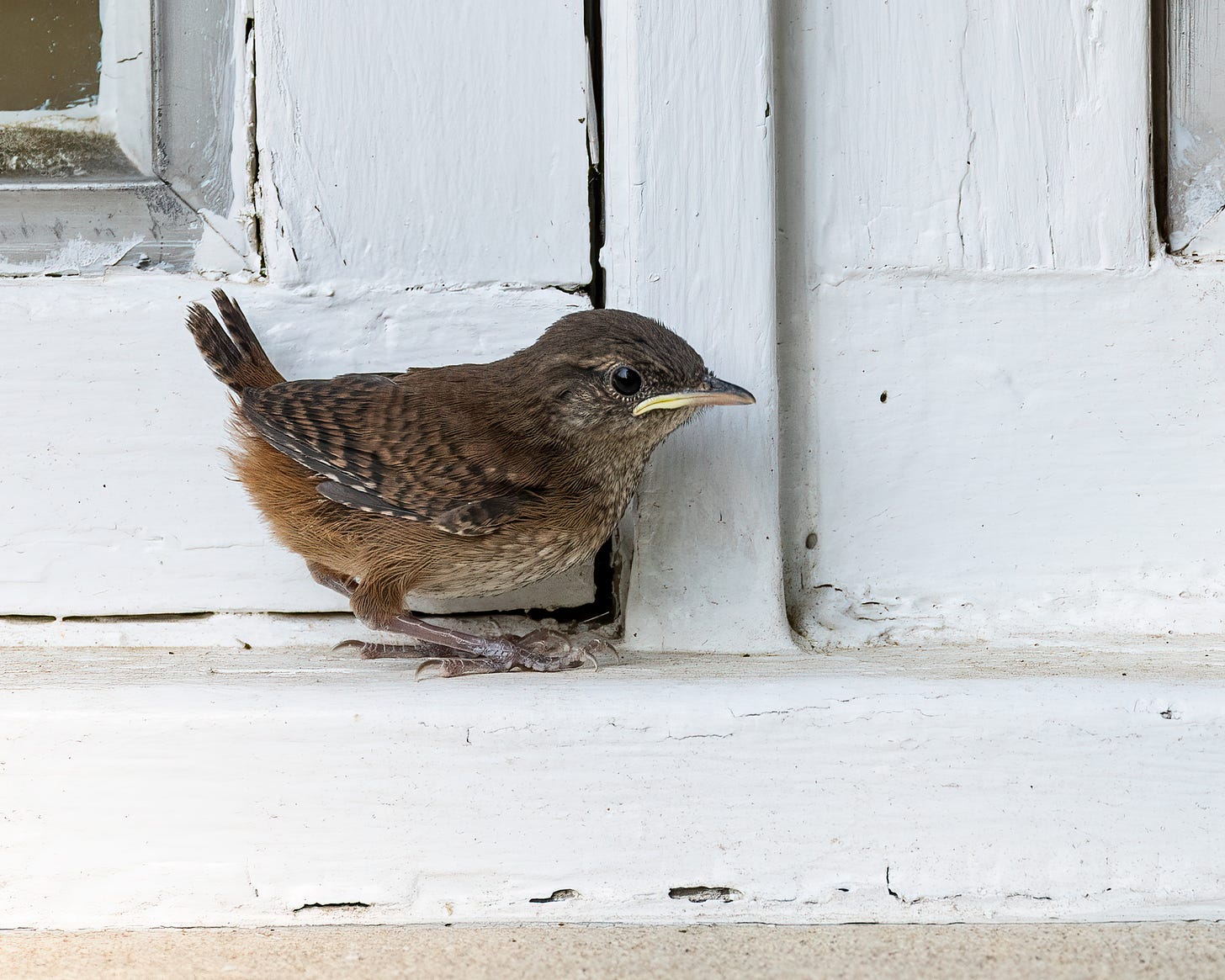
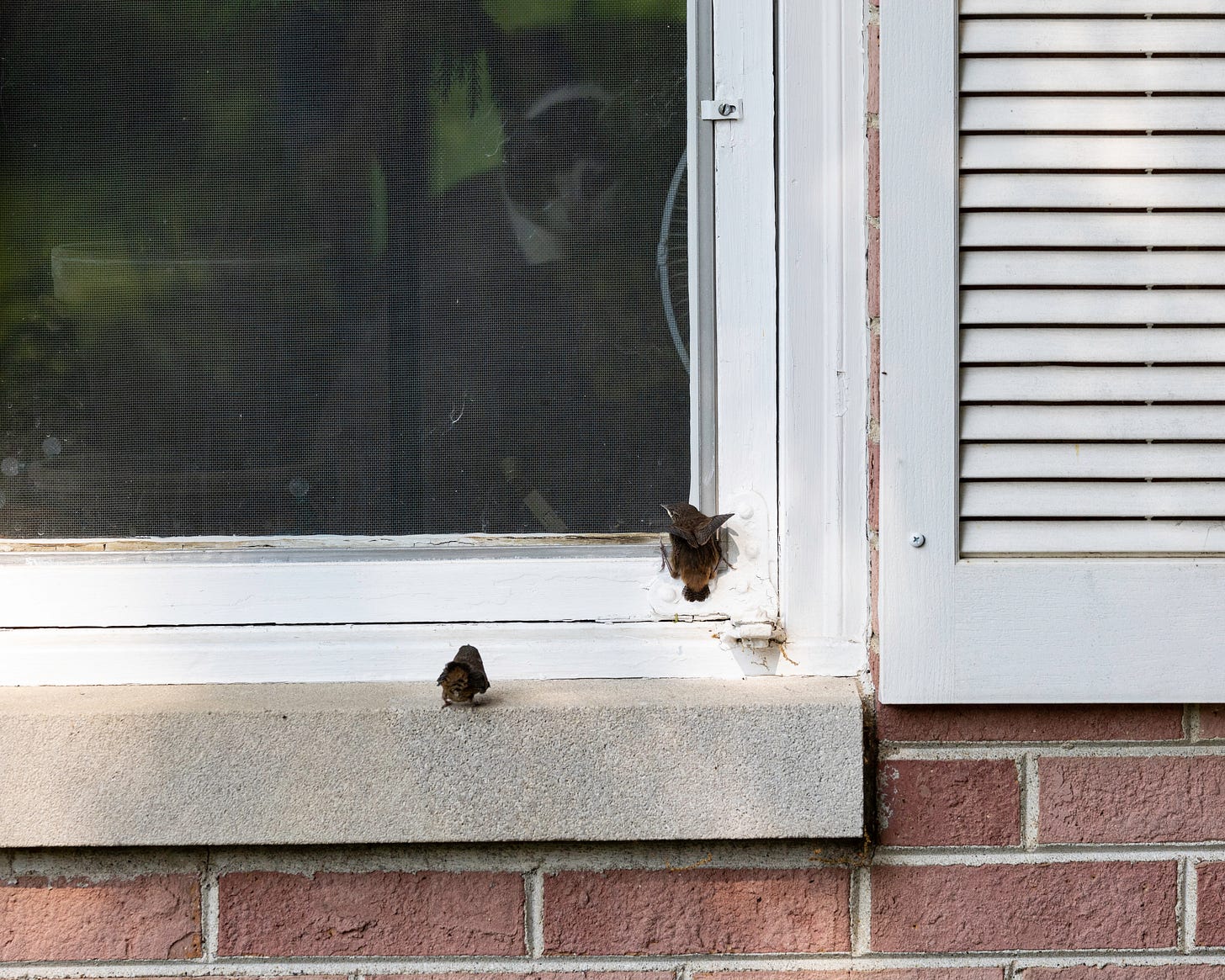
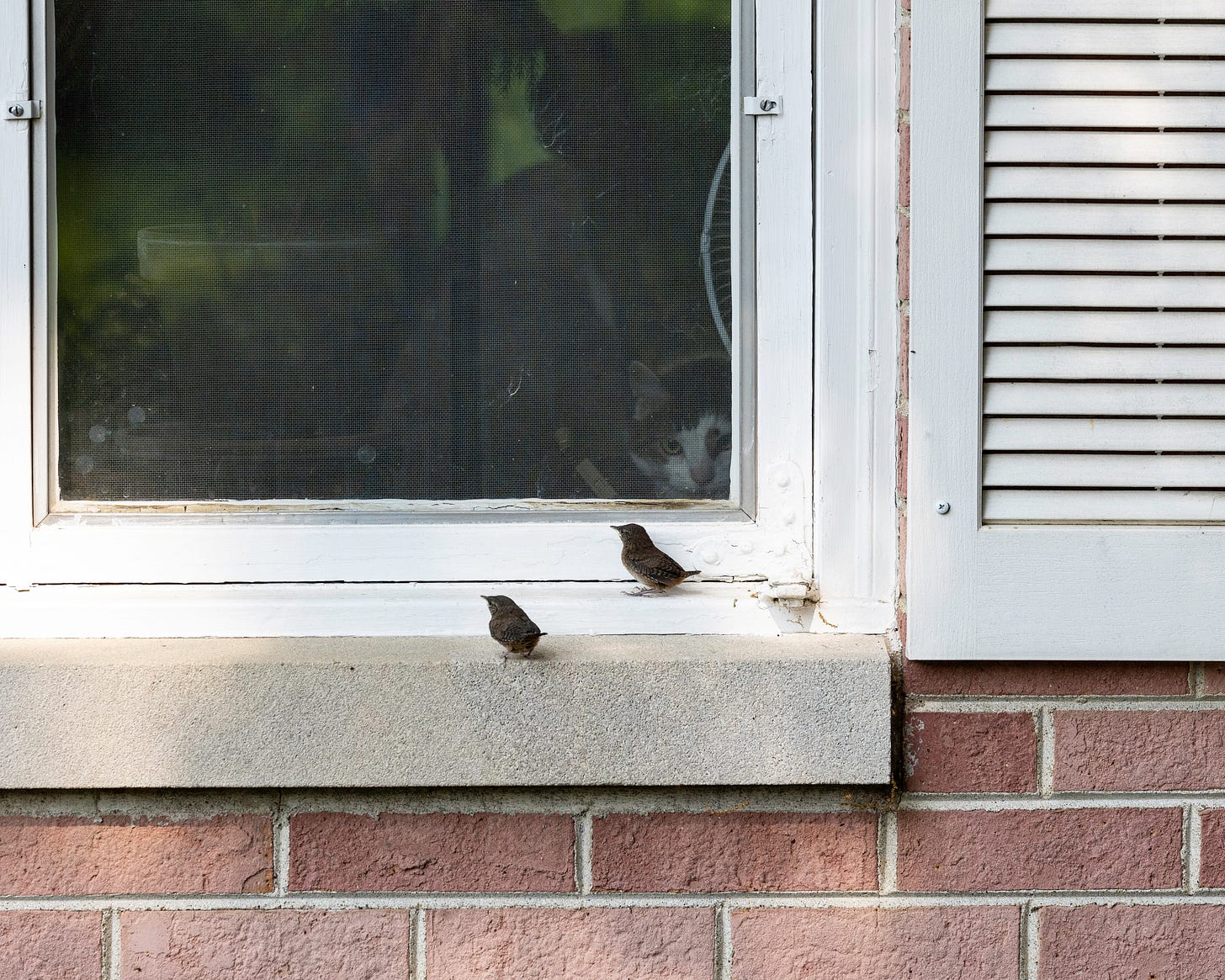
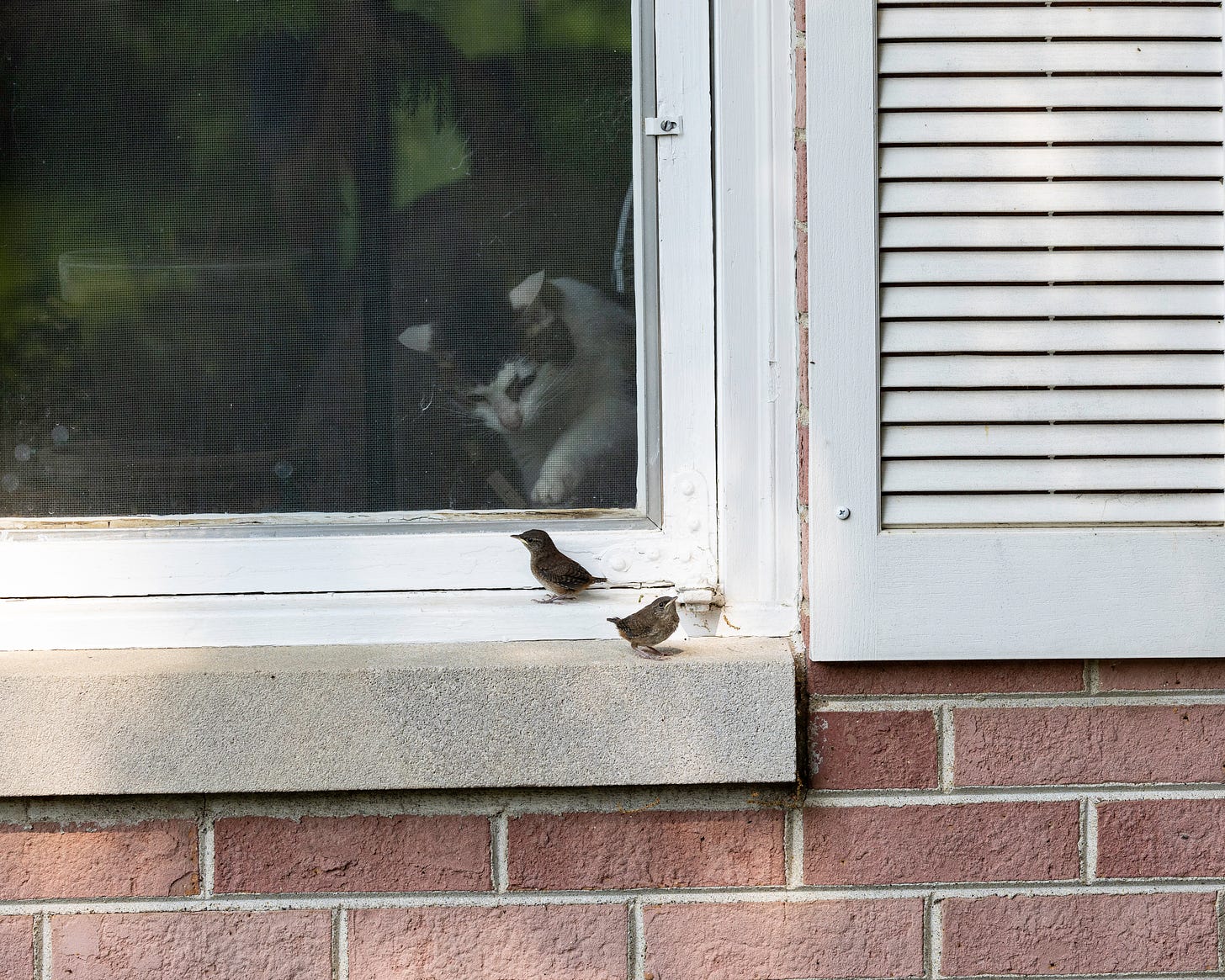
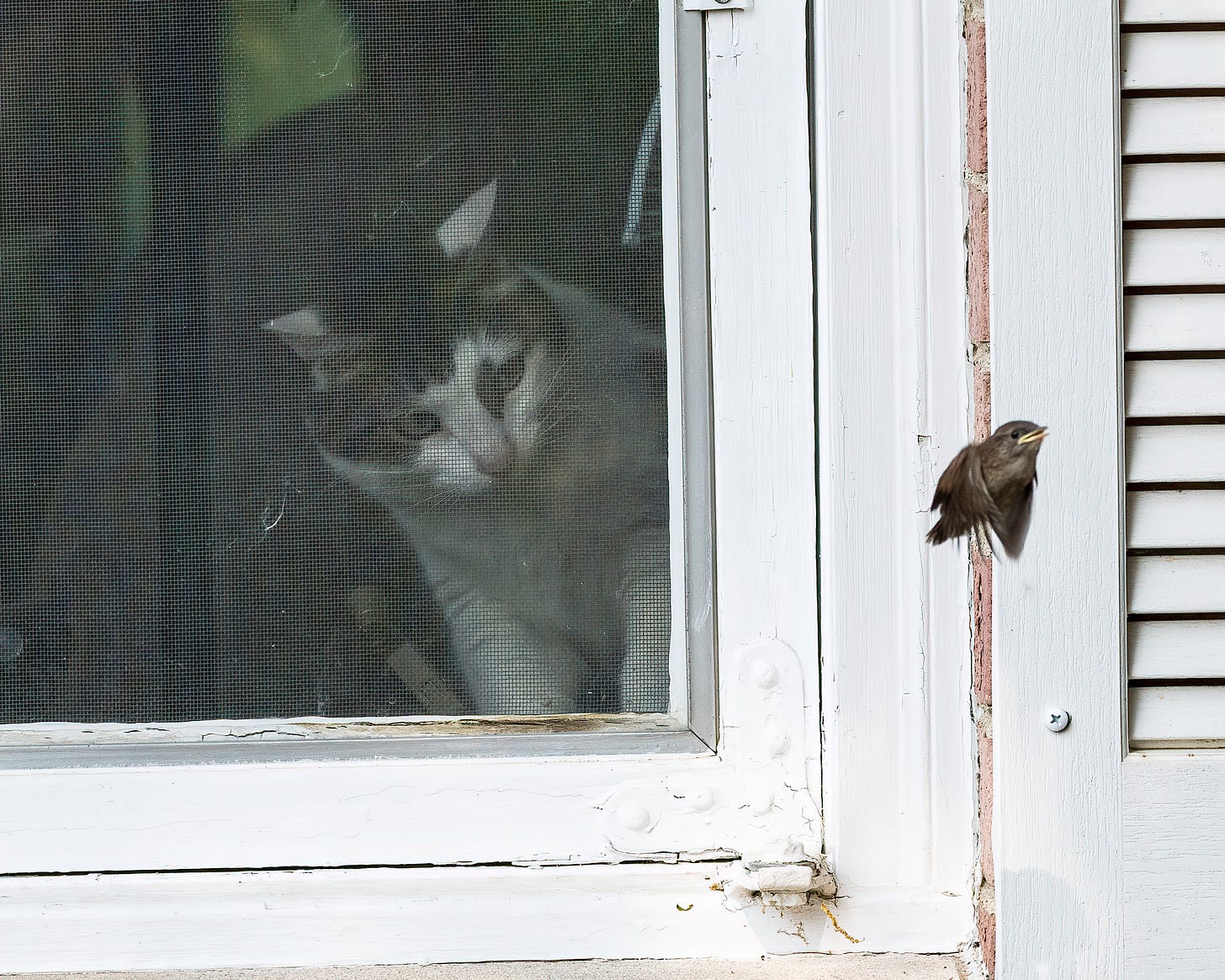
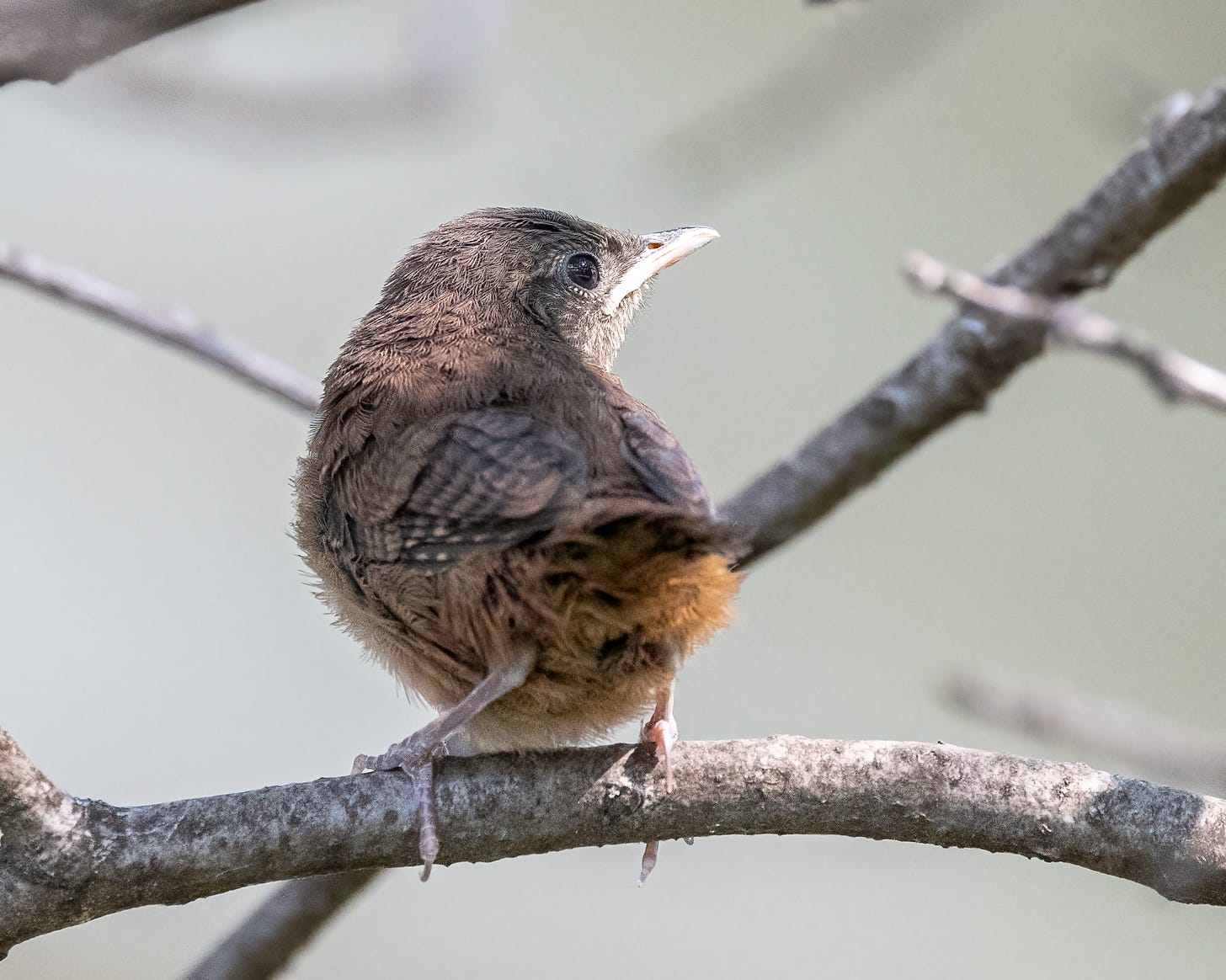
I just love seeing our cat, Tomoko, in the window. She is such a fierce hunter of birds from behind a window! Ha ha!
I have a family of wrens as well. They sing all morning long. Although all the birds were very quiet the other day when the air quality was in the danger zone. It was creepy.